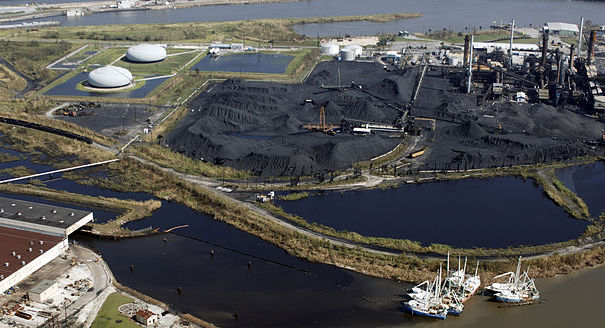Source: Institute for Policy, Advocacy, and Governance
Heavier oils are naturally higher in their carbon content, creating challenges in production, refining, transport, and marketing. In order to refine heavier oils, the ‘coking’ process was patented in 1913 in order to make more high-value transport fuels out of the ‘bottom of the oil barrel.’ Wringing out more liquids using coking, however, results in a solid residue called petroleum coke, or ‘petcoke.’
The heavier the oil, the more petcoke produced. The higher an oil’s sulfur and heavy metal content, the lower the petcoke’s quality and value. While petcoke that is low in sulfur and heavy metals can be treated (calcined) and used to produce aluminum, steel, and as industrial feedstock, fuel grade or “green” petcoke, which is high in sulfur and heavy metals, is burned in power plants to generate electricity.
Fuel grade petcoke is generally too dirty to produce power in the United States. To prevent petcoke from piling up, the U.S. sells its stores of fuel grade petcoke, mostly to Asia where environmental regulations tend to be less stringent. With as much as 9% sulfur along with elevated levels of nickel and vanadium, burning petcoke emits particulates, sulfates, and other air contaminants that degrade the environment and threaten public health...
